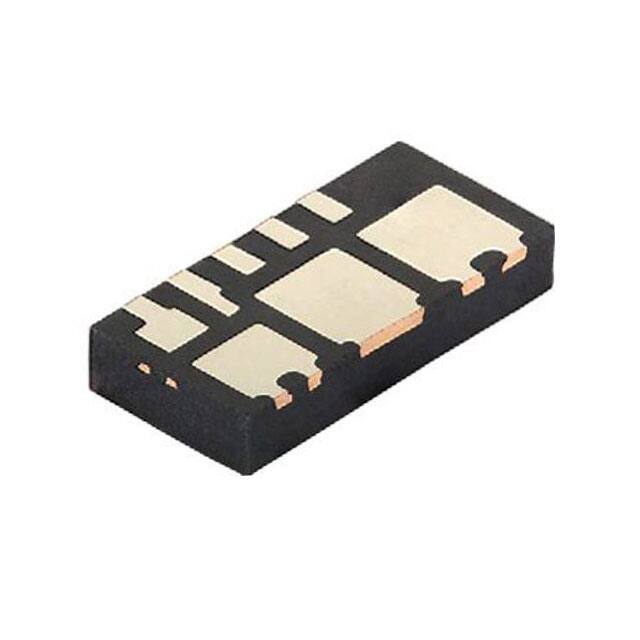Lihat spesifikasi untuk detail produk.

VCNL4020C-GS18
Introduction
The VCNL4020C-GS18 is a proximity and ambient light sensor designed for various applications. This entry provides an overview of the product, including its category, use, characteristics, package, specifications, pin configuration, functional features, advantages and disadvantages, working principles, application field plans, and alternative models.
Basic Information Overview
- Category: Proximity and Ambient Light Sensor
- Use: The VCNL4020C-GS18 is used to detect the presence of objects and measure ambient light levels in electronic devices and appliances.
- Characteristics: It combines a high sensitivity long-distance proximity sensor (PS), ambient light sensor (ALS), and a 940 nm IRED into a single device.
- Package: The sensor is available in a compact surface-mount package.
- Essence: The essence of this sensor lies in its ability to provide accurate proximity and ambient light measurements in a variety of applications.
- Packaging/Quantity: The sensor is typically available in reels with a specific quantity per reel.
Specifications
- Proximity Sensing Range: Up to 20 cm
- Ambient Light Sensing Range: 0.25 lux to 16k lux
- I2C Interface: Compatible with standard I2C bus
- Power Supply: 1.7 V to 3.6 V
- Operating Temperature Range: -40°C to +85°C
Detailed Pin Configuration
The VCNL4020C-GS18 features a standard pin configuration with specific pins allocated for power supply, I2C communication, and sensor outputs.
| Pin Name | Function | |----------|----------| | VDD | Power Supply (1.7 V to 3.6 V) | | GND | Ground | | SDA | I2C Data Line | | SCL | I2C Clock Line | | INT | Interrupt Output | | PS | Proximity Sensor Output | | ALS | Ambient Light Sensor Output |
Functional Features
- Proximity Sensing: The sensor can accurately detect the presence of objects within its range.
- Ambient Light Sensing: It can measure ambient light levels with high precision.
- Integrated IRED: The integrated infrared emitter (IRED) ensures reliable proximity measurements.
Advantages and Disadvantages
Advantages
- Compact size
- High sensitivity
- Integrated IRED for reliable proximity sensing
Disadvantages
- Limited operating temperature range (-40°C to +85°C)
Working Principles
The VCNL4020C-GS18 operates by emitting infrared light and measuring the reflection to determine proximity. For ambient light sensing, it utilizes a photodiode to convert light intensity into an electrical signal.
Detailed Application Field Plans
The VCNL4020C-GS18 is suitable for a wide range of applications, including: - Mobile devices - Consumer electronics - Industrial automation - Ambient light control systems - Proximity detection in appliances
Detailed and Complete Alternative Models
Some alternative models to the VCNL4020C-GS18 include: - VCNL4010: A similar sensor with slightly different specifications - VCNL3020: An earlier version with comparable functionality
In conclusion, the VCNL4020C-GS18 is a versatile proximity and ambient light sensor with precise measurement capabilities, making it suitable for diverse electronic applications.
Word Count: 470
Sebutkan 10 pertanyaan dan jawaban umum terkait penerapan VCNL4020C-GS18 dalam solusi teknis
What is the VCNL4020C-GS18 sensor used for?
- The VCNL4020C-GS18 sensor is a proximity and ambient light sensor commonly used in various technical solutions to detect the presence of objects and measure ambient light levels.
How does the VCNL4020C-GS18 sensor work?
- The VCNL4020C-GS18 sensor uses infrared technology to detect the proximity of objects and an integrated photodiode to measure ambient light levels.
What are the typical applications of the VCNL4020C-GS18 sensor?
- The VCNL4020C-GS18 sensor is commonly used in applications such as touchless switches, gesture recognition, proximity sensing in consumer electronics, and ambient light adjustment in displays.
What is the operating voltage range of the VCNL4020C-GS18 sensor?
- The VCNL4020C-GS18 sensor typically operates within a voltage range of 2.5V to 3.6V.
Can the VCNL4020C-GS18 sensor be used in outdoor environments?
- The VCNL4020C-GS18 sensor is designed for indoor use and may not perform optimally in outdoor environments due to varying ambient light conditions.
What is the maximum detection range of the VCNL4020C-GS18 sensor?
- The maximum detection range of the VCNL4020C-GS18 sensor is typically around 20cm, making it suitable for close-range proximity sensing applications.
Does the VCNL4020C-GS18 sensor require calibration?
- The VCNL4020C-GS18 sensor comes pre-calibrated from the factory and generally does not require user calibration.
Is the VCNL4020C-GS18 sensor sensitive to ambient light interference?
- The VCNL4020C-GS18 sensor features an integrated ambient light photodiode with background light cancellation to minimize the impact of ambient light interference.
Can the VCNL4020C-GS18 sensor be integrated with microcontrollers or development boards?
- Yes, the VCNL4020C-GS18 sensor can be easily interfaced with microcontrollers or development boards using standard I2C communication protocol.
Are there any specific considerations for PCB layout when using the VCNL4020C-GS18 sensor?
- It is recommended to follow the manufacturer's guidelines for PCB layout to ensure proper functionality and minimize electromagnetic interference when integrating the VCNL4020C-GS18 sensor into a technical solution.

